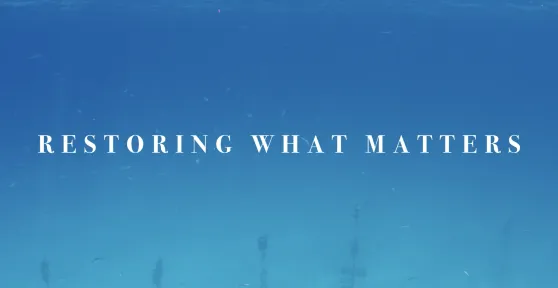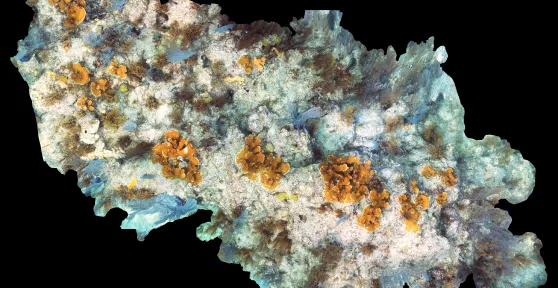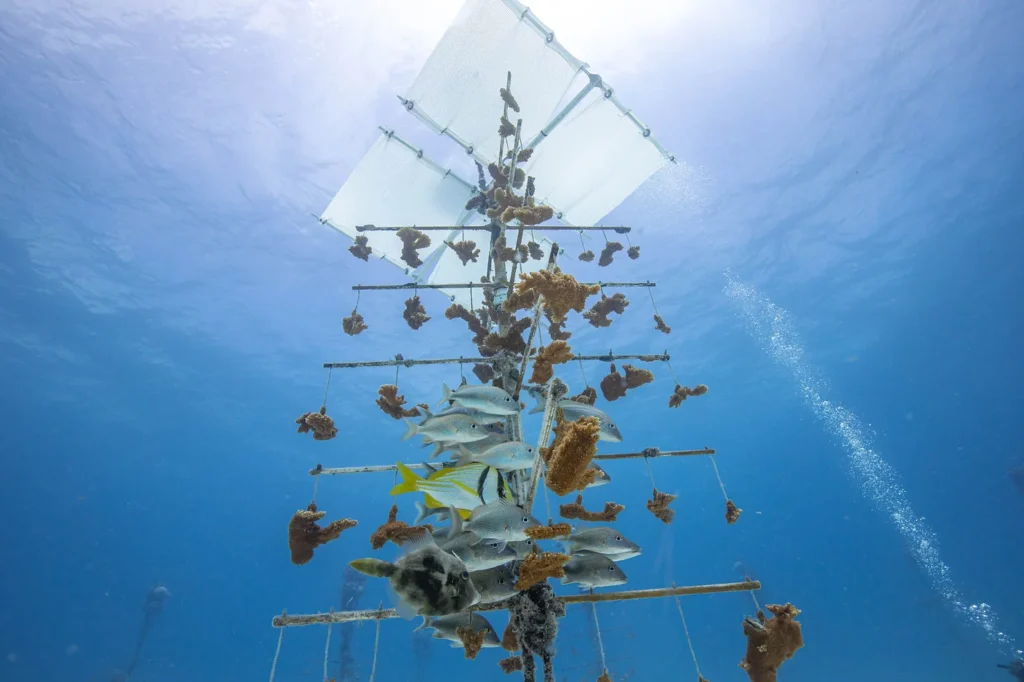
It is estimated that at least 60% of corals around the world bleached during the fourth global bleaching event.
This event originated in the Caribbean region in the summer of 2023, and is still currently ongoing in parts of the Atlantic, Pacific, and Indian Ocean basins. It consists of unprecedented levels of ocean warming, which, in Florida, started earlier, lasted longer, and was more severe than any previous event in the region.
This heatwave triggered the bleaching response of many of the corals throughout Florida’s Coral Reefs, and eventually led to extensive coral mortality when the thermal stressors failed to diminish in a timely manner.
The coral located in the Coral Restoration Foundation™ (CRF™) open-ocean nurseries were not untouched by this bleaching event. Nearly 50% of coral stock across all nurseries were lost in response to the excessive heat stress experienced last summer.
Coral bleaching is expected to become more frequent and severe with each passing year, prompting the need for proactive bleaching mitigation strategies to preserve the threatened coral species and genotypes that call our in-situ nurseries home.
That is where the newest pilot project at CRF™ comes in. Inspired by the urgent need to find innovative solutions to combat coral bleaching in our in-situ nurseries, a dedicated group of interns developed a design for a shading structure that could be deployed on individual, existing Coral Trees within the CRF™ nurseries.
Since the severity of coral bleaching damage is correlated with both heat stress and light intensity, shading corals from direct sunlight could shield them from excessive lighting and water heating, and thereby delay the onset of bleaching, and potentially reduce their likelihood to bleach in general. This protection will be especially important during the summer months of the year, when UV intensity and ocean temperature levels tend to be at their highest, and when bleaching threats are most prevalent.
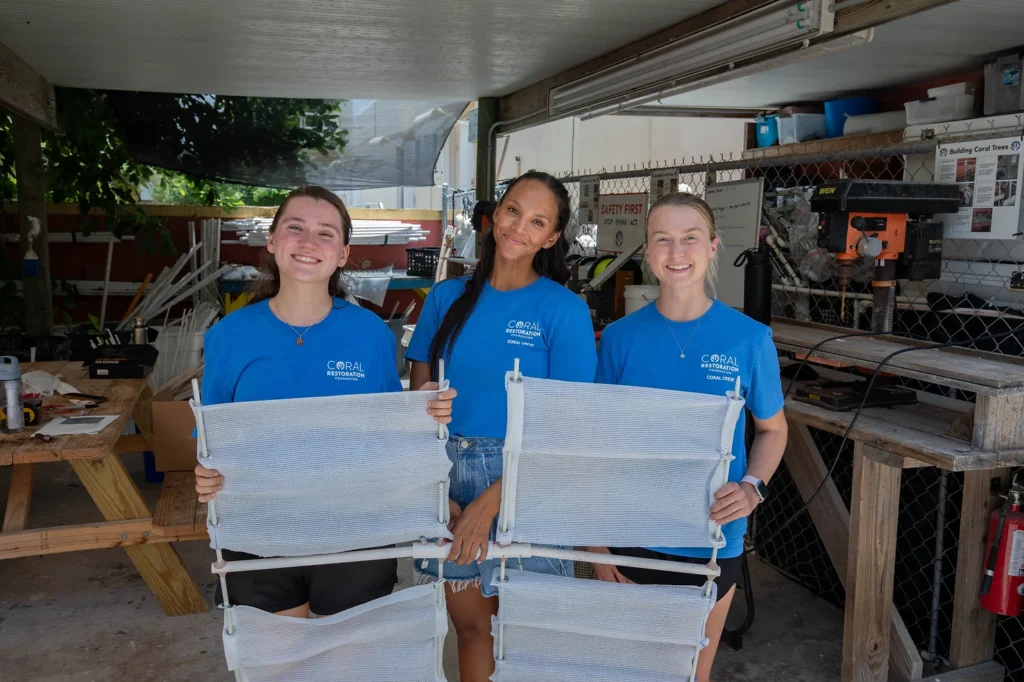
“The goal was to develop lightweight, easy to install shading devices that could effectively shade the coral underneath each Coral Tree™, without needing to extensively modify the existing Coral Tree™ design,” said Marielle Lenehan, one of the interns on the project, who is responsible for coordinating the development of the shade structure design.
The structure consists of three components: a main center structure that seamlessly integrates with the top of the Coral Tree™, two antenna-like arms that insert on either side of the main structure, and four shade cloth squares. Grommeted holes on each cloth allow for the fabric to be woven onto the structure’s fiberglass rods like a curtain. Once the shade fabric is fully extended and in position, it is then secured in place using zip ties.
“Our modular design not only makes underwater installation more manageable, but it enables parts of the shade to be quickly and easily removed as necessary, simplifying tasks like nursery maintenance or hurricane preparation,” said Lenehan.
The shading structure uses the same PVC pipes and fiberglass rods that are used to build the Coral Trees™, maximizing our existing materials. The shade cloth fabric is similar to those used in agricultural and recreational shading settings, but a white-colored fabric was chosen as opposed to the standard black coloration.
“Research suggests that lighter-colored shading fabric has higher UV reflection and the potential to provide cooler temperatures under the shade when compared to black or darker-colored shading fabrics,” said Melissa Cobo, the intern on the project who is responsible for the underwater shade fabric research and development.
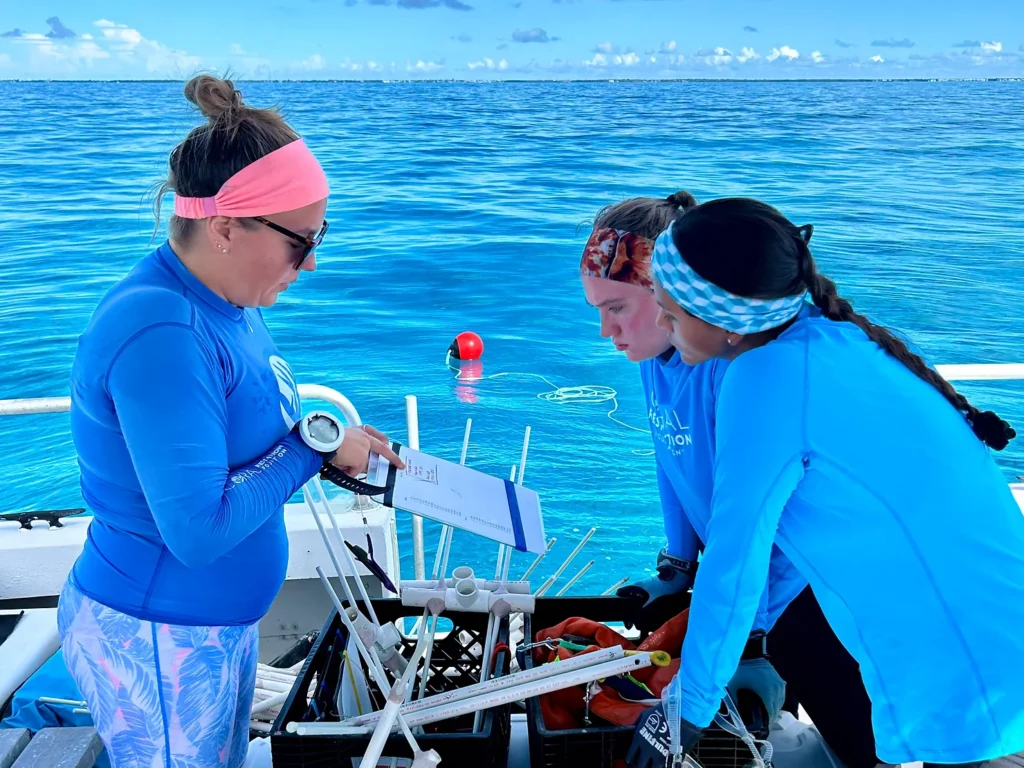
Data gathered from temperature and light sensing probes placed underneath the shade structures will determine to what extent a physical barrier can decrease light intensity levels and water temperature in a localized area underwater. These probes were installed during the initial pilot project deployment last week, in which ten shade structures were deployed in our Tavernier Nursery, and two additional units deployed in our Key West Nursery.
“We have begun installing the shade structures within our nurseries in the hopes they will have a positive impact on the health of the coral under our care this summer,” said Lindsey Smith, a CRF™ Reef Restoration Coordinator and the Nursery Division Lead.
The goal is to install a total of 100 shade structures in the CRF™ nurseries over the next few months, during which the efficacy and durability of the proof-of-concept design will be evaluated. Before the installation of the shading structures in the nurseries, many factors had to be considered, especially regarding dealing with the underwater environment.

“The biggest issue we faced while installing our shades was the question of how to fully secure our structures to the Coral Trees™ to ensure that they could withstand the varying conditions of a natural ocean environment, such as waves, storms and rough seas,” said Skylar Worley, the intern in charge of the implementation of the shades in the CRF™ nurseries.
“Currently, we are using monofilament line to tie down and secure the shading structure to the tree. In the future, we plan to drill a hole through the tree trunk and the main center component of the shading structure, in which a thick piece of monofilament line can go through to lock the shade in place,” shared Worley.
According to Worley, the overall installation process was a breeze. “These structures were built with efficiency, adaptability, and reliability in mind, and we are very excited to see how our corals react their new shaded environments!”
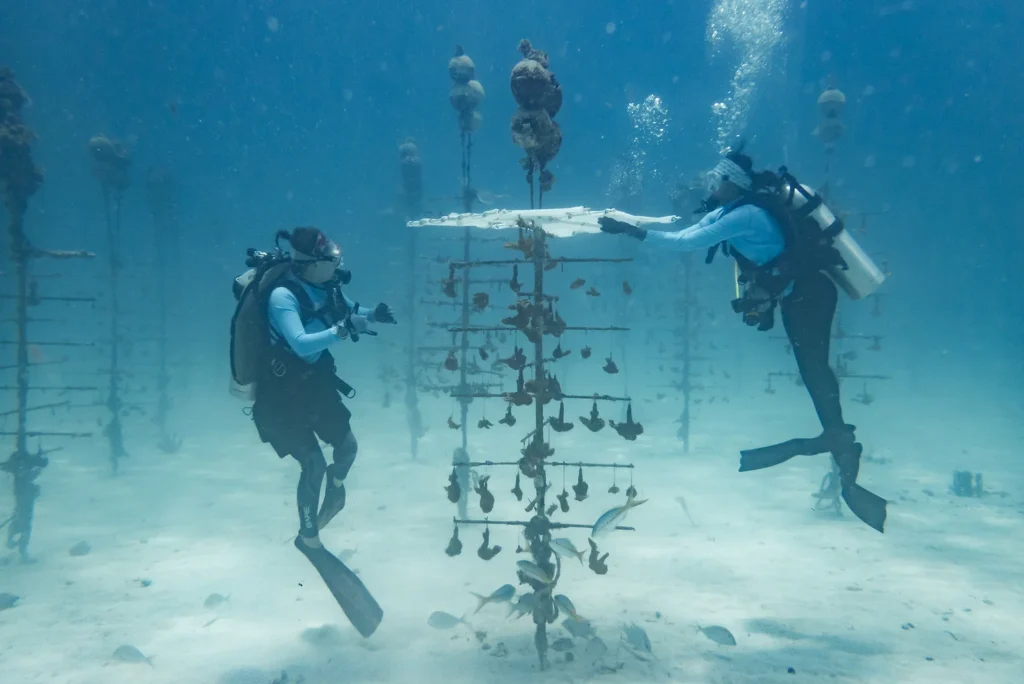
Phanor Montoya-Maya, the Restoration Program Manager for CRF™, sees the shading structure as a vital part of the future of coral bleaching mitigation in in-situ production stock. “By reducing light exposure during critical periods, we can give corals a better chance to survive and recover from heat stress events. This innovation, combined with broader climate action and improved local management, represents a holistic approach to enhance the sustainability of coral reef restoration efforts.”
The current global bleaching event and the looming threat of future disturbance events emphasizes the imperative to aggressively address climate change and urgently mitigate its impact on our global coral reef ecosystems and restoration efforts. Researching and advocating for ocean-friendly legislation can support this need, in addition to permitting the large-scale action that is vital for effective recovery of these ecosystems.
Supporting initiatives to develop innovative strategies to combat coral reef degradation is also critical in ensuring the coral restoration community remains adaptable in the face of an increasingly unpredictable climate.
“This project underscores the importance of collaboration and innovation in coral restoration,” said Montoya-Maya. “The shading structures, developed through the ingenuity of our interns, not only address immediate threats, but also pave the way for future advancements in coral bleaching mitigation strategies within coral restoration efforts. Together, we can make a significant impact on the health and resilience of our coral reef restoration projects.”
